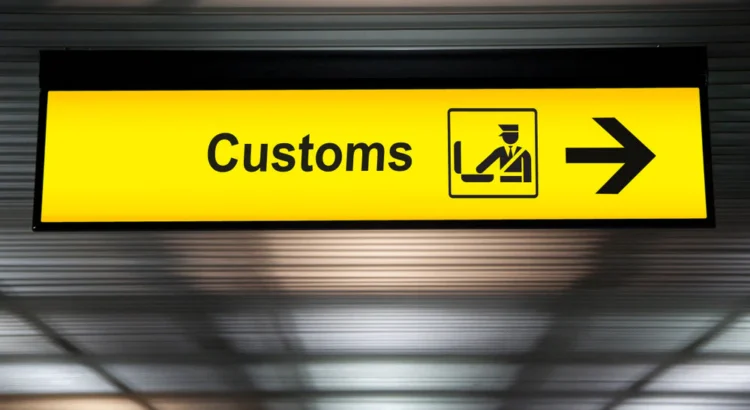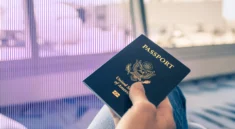
For many travelers, the thrill of arriving in a new country is quickly dulled by one dreaded obstacle: customs and immigration lines. Whether you’re landing after a long-haul flight or rushing to make a connecting trip, the bottleneck of border control can feel like the most exhausting part of the journey. But with a few smart strategies, you can bypass the crowds, speed up the process, and reclaim your travel time.
In this ultimate guide, we’ll explore proven customs hacks used by seasoned travelers around the world—tools, programs, apps, and behavioral tricks—that will help you breeze through borders like a pro. Whether you’re traveling for business, vacation, or anything in between, these insights can turn a frustrating wait into a smooth transition.
Why Customs Lines Are So Painful
Before diving into solutions, it helps to understand why customs can be so slow:
- High volume of travelers, especially at major hubs.
- Manual document checks for passports and visas.
- Security and health screenings post-COVID.
- Random inspections and luggage screenings.
- Language barriers and unprepared travelers clogging the line.
The good news? Many of these obstacles are predictable and avoidable. With preparation and knowledge, you can jump the queue—legally and efficiently.
1. Join A Trusted Traveler Program
One of the biggest time-saving decisions you can make is to enroll in a Trusted Traveler Program. These are official government-run programs that pre-clear you as a low-risk traveler, often giving you access to shorter lanes.
Global Entry (U.S.)
- Managed by U.S. Customs and Border Protection (CBP).
- Allows expedited clearance for pre-approved travelers entering the U.S.
- Includes TSA PreCheck for domestic flights.
- Application process: Online form, $100 fee, background check, and in-person interview.
- Time savings: 15–60 minutes at major U.S. airports.
NEXUS (U.S. & Canada)
- Ideal for U.S.-Canada border crossings.
- Also includes Global Entry benefits.
- Cost-effective ($50 for five years).
SENTRI (U.S.-Mexico)
- Best for frequent U.S.–Mexico travelers.
- Includes access to Global Entry.
e-Gate and Smart Gates (EU, Asia, Middle East)
- Countries like the UK, Australia, Singapore, and UAE offer automated gates for eligible passport holders.
- Often free and quicker than manual counters.
Tip: Apply well before your trip. Some programs have long processing times, but the benefits are long-lasting.
2. Travel With Carry-On Only (When Possible)
Checking luggage often leads to extra scrutiny at customs, especially if customs officers spot something odd on the scanner. Traveling with carry-on allows you to:
- Skip baggage claim.
- Move directly from aircraft to customs line.
- Appear like a more organized and experienced traveler (reducing your chances of being randomly stopped).
If you must check a bag, keep essential documents, medications, and a change of clothes in your carry-on—just in case customs delays your luggage release.
3. Use The Right Passport Line
If you hold dual citizenship, use the passport that offers the shortest or most privileged lane.
- EU passport in the Schengen zone?
- U.S. passport on reentry with Global Entry?
- Japanese passport in Japan’s automated Smart Gate?
Every second counts.
Bonus Hack: When arriving at a busy terminal, observe which lanes are moving fastest—sometimes lanes marked for “Families with children” or “Residents” might process people quicker than “Visitors”, depending on the airport’s setup.
4. Fill Out Forms In Advance (Digitally If Possible)
Many countries now require digital arrival cards or declarations to be submitted before arrival.
- Australia: Digital Passenger Declaration.
- New Zealand: NZTD online form.
- U.S.: Mobile Passport Control (MPC) app for eligible travelers.
- India: Air Suvidha health declarations (during health emergencies).
- Indonesia: Electronic Customs Declaration form.
Pro Tip: Check the official website of your destination airport or immigration authority a few days before your flight. The digital versions of customs forms can save you serious time and confusion upon landing.
5. Be Smart About Your Flight Timing
When possible, avoid peak arrival hours at major international airports.
- Red-eye flights that arrive early in the morning are often quieter.
- Mid-day and late-night arrivals can avoid the rush of multi-airline clusters.
- Try to book direct flights to avoid multiple customs processes during transfers.
Some travelers even use flight tracking websites to determine the busiest times at a specific airport based on real-time arrival schedules.
6. Dress Neatly And Confidently
Believe it or not, how you present yourself can influence how you’re treated at customs.
- Dress like a traveler with purpose—not someone suspicious or trying to hide.
- Avoid sunglasses indoors.
- Maintain eye contact.
- Have your documents organized and ready.
Officers are trained to spot nervous or disorganized behavior. Calm confidence gets you through faster.
7. Use Fast Track Services (Airline or Airport-Based)
Many international airports offer paid fast track services through immigration and customs.
- Heathrow Express Lane.
- Changi’s Fast Track Pass (Singapore).
- Dubai Airport Premium Meet & Greet Services.
Some airlines offer this as part of business or first-class tickets. Others may allow you to purchase it separately for around $30–$100.
If you’re short on time or just value convenience, these services are worth the investment.
8. Don’t Be The Reason For Delays
Customs lines are often slowed down by unprepared travelers. Don’t be one of them.
- Don’t bring prohibited items like fresh fruit, meat, or undeclared alcohol.
- Know your duty-free allowances.
- Be honest about cash amounts (many countries require declaration over a certain threshold).
- Don’t take photos or use your phone in restricted customs areas.
Fast travelers have their documents ready, their forms completed, and answer questions clearly. The smoother your interaction, the quicker the line moves.
9. Use The Mobile Passport Control App (U.S. Airports)
For U.S. travelers, Mobile Passport Control (MPC) is a free app that can save serious time.
- Available at over 30 major U.S. airports.
- Allows U.S. and Canadian citizens to submit passport and declaration info digitally.
- Dedicated shorter lines separate from traditional customs.
It’s not as fast as Global Entry, but it requires no interview or pre-approval, and it’s completely free.
Tip: Download the app before your flight and fill out your information while taxiing to the gate.
10. Plan For Connecting Flights Wisely
If you have a layover that includes a customs check:
- Allow extra time, especially if you’re not using fast-track options.
- Avoid tight connections at customs-heavy airports like JFK, LAX, or London Heathrow.
- Pick airports known for efficient processing, like Munich, Tokyo Haneda, or Doha.
Some smart travelers build in longer layovers at smaller, quieter airports with better customs efficiency.
11. Know What Triggers Additional Screening
Customs officers may randomly select travelers for additional screening—but certain things increase your odds:
- Excessive duty-free shopping bags.
- Multiple visas from high-risk regions.
- Large amounts of undeclared electronics or medications.
- Nervous body language or inconsistent answers.
If selected, stay calm, be cooperative, and answer clearly. Trying to argue or hide details only makes things worse.
12. Use A VPN To Access Arrival Information Abroad
Sometimes access to local customs forms or arrival apps may be blocked by geo-restrictions. Use a VPN to access your home country’s official immigration sites and fill out everything before arrival.
This is particularly useful for digital nomads or travelers in countries with internet censorship.
13. Learn Key Phrases In The Local Language
Even if you don’t speak the local language, knowing a few customs-related words helps:
- “Passport” = “passeport” (French), “pasaporte” (Spanish), “reisepass” (German).
- “Visa”, “declaration form”, “nothing to declare”, etc.
A simple smile and a respectful greeting in the local language can also go a long way in creating a smoother interaction.
Final Thoughts: Time Is Travel Currency
The time you spend standing in a customs line is time you’re not exploring, resting, or connecting. And while some delays are inevitable, the smart traveler finds ways to minimize friction.
From government programs and digital forms to simple behavioral tweaks and good timing, beating customs lines is as much about preparation as it is about technique.
In the age of smart travel, every minute counts. So equip yourself with these hacks, plan ahead, and step off the plane knowing you’re ready to enter your next destination faster and smoother than ever before.
Happy travels—and may your customs experience be quick and painless.




